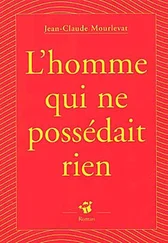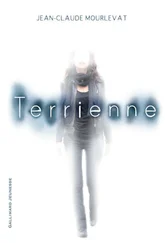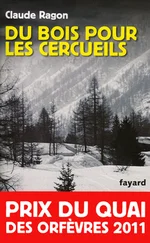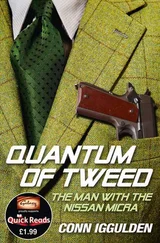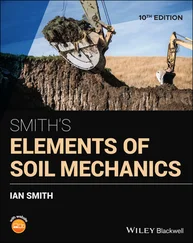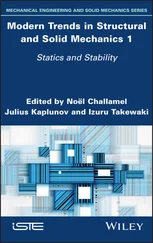1 Cover
2 Foreword
3 Chapter XV: Creation and annihilation operators for identical particles Chapter XV Creation and annihilation operators for identical particles 1 A General formalism A-1 Fock states and Fock space A-2 Creation operators a † A-3 Annihilation operators a A-4 Occupation number operators (bosons and fermions) A-5 Commutation and anticommutation relations A-6 Change of basis 2 B One-particle symmetric operators B-1 Definition B-2 Expression in terms of the operators a and a † B-3 Examples B-4 Single particle density operator 3 C Two-particle operators C-1 Definition C-2 A simple case: factorization C-3 General case C-4 Two-particle reduced density operator C-5 Physical discussion; consequences of the exchange
A. General formalism A. General formalism We denote N the state space of a system of N distinguishable particles, which is the tensor product of N individual state spaces 1 : (A-1) Two sub-spaces of N are particularly important for identical particles, as they contain all their accessible physical states: the space S ( N ) of the completely symmetric states for bosons, and the space A ( N ) of the completely antisymmetric states for fermions. The projectors onto these two sub-spaces are given by relations (B-49) and (B-50) of Chapter XIV: (A-2) and: (A-3) where the Pα are the N ! permutation operators for the N particles, and εα the parity of Pα (in this chapter we have added for clarity the index N to the projectors S and A defined in Chapter XIV).
B. One-particle symmetric operators B. One-particle symmetric operators Using creation and annihilation operators makes it much easier to deal, in the Fock space, with physical operators that are thus symmetric (§ C-4-a- β of Chapter XIV). We first study the simplest of such operators, those which act on a single particle and are called “one-particle operators”.
C. Two-particle operators C. Two-particle operators We now extend the previous results to the case of two-particle operators.
COMPLEMENTS OF CHAPTER XV, READER’S GUIDE Complement A XVParticles and holes 1. Ground state of a non-interacting fermion gas 2. New definition for the creation and annihilation operators 3. Vacuum excitations Complement B XVIdeal gas in thermal equilibrium; quantum distribution functions 1. Grand canonical description of a system without interactions 2. Average values of symmetric one-particle operators 3. Two-particle operators 4. Total number of particles 5. Equation of state, pressure Complement C XVCondensed boson system, Gross-Pitaevskii equation 1. Notation, variational ket 2. First approach 3. Generalization, Dirac notation 4. Physical discussion Complement D XVTime-dependent Gross-Pitaevskii equation 1. Time evolution 2. Hydrodynamic analogy 3. Metastable currents, superfluidity Complement E XVFermion system, Hartree-Fock approximation 1. Foundation of the method 2. Generalization: operator method Complement F XVFermions, time-dependent Hartree-Fock approximation 1. Variational ket and notation 2. Variational method 3. Computing the optimizer 4. Equations of motion Complement G XVFermions or Bosons: Mean field thermal equilibrium 1. Variational principle 2. Approximation for the equilibrium density operator 3. Temperature dependent mean field equations Complement H XVApplications of the mean field method for non-zero temperature (fermions and bosons) 1. Hartree-Fock for non-zero temperature, a brief review 2. Homogeneous system 3. Spontaneous magnetism of repulsive fermions 4. Bosons: equation of state, attractive instability
4 Chapter: XVI Field operator A. Definition of the field operator B. Symmetric operators C. Time evolution of the field operator (Heisenberg picture) D. Relation to field quantization COMPLEMENTS OF CHAPTER XVI, READER’S GUIDE Complement A XVISpatial correlations in an ideal gas of bosons or fermions 1. System in a Fock state 2. Fermions in the ground state 3. Bosons in a Fock state Complement B XVISpatio-temporal correlation functions, Green’s functions 1. Green’s functions in ordinary space 2. Fourier transforms 3. Spectral function, sum rule Complement C XVIWick’s theorem 1. Demonstration of the theorem 2. Applications: correlation functions for an ideal gas
5 Chapter: XVII Paired states particles of identical A. Creation and annihilation operators of a pair of particles B. Building paired states C. Properties of the kets characterizing the paired states D. Correlations between particles, pair wave function E. Paired states as a quasi-particle vacuum; Bogolubov-Valatin transformations COMPLEMENTS OF CHAPTER XVII, READER’S GUIDE Complement A XVIIPair field operator for identical particles 1. Pair creation and annihilation operators 2. Average values in a paired state 3. Commutation relations of field operators Complement B XVIIAverage energy in a paired state 1. Using states that are not eigenstates of the total particle number 2. Hamiltonian 3. Spin 1/2 fermions in a singlet state 4. Spinless bosons Complement C XVIIFermion pairing, BCS theory 1. Optimization of the energy 2. Distribution functions, correlations 3. Physical discussion 4. Excited states Complement D XVIICooper pairs 1. Cooper model 2. State vector and Hamiltonian 3. Solution of the eigenvalue equation 4. Calculation of the binding energy for a simple case Complement E XVIICondensed repulsive bosons 1. Variational state, energy 2. Optimization 3. Properties of the ground state 4. Bogolubov operator method
6 Chapter: XVIII REVIEW OF CLASSICAL ELECTRODYNAMICS A. Classical electrodynamics B. Describing the transverse field as an ensemble of harmonic oscillators COMPLEMENTS OF CHAPTER XVIII, READER’S GUIDE Complement A XVIIILagrangian formulation of electrodynamics 1. Lagrangian with several types of variables 2. Application to the free radiation field 3. Lagrangian of the global system field + interacting particles
7 Chapter: XIX QUANTIZATION OF ELECTROMAGNETIC RADIATION A. Quantization of the radiation in the Coulomb gauge B. Photons, elementary excitations of the free quantum field C. Description of the interactions COMPLEMENTS OF CHAPTER XIX, READER’S GUIDE Complement A XIXMomentum exchange between atoms and photons 1. Recoil of a free atom absorbing or emitting a photon 2. Applications of the radiation pressure force: slowing and cooling atoms 3. Blocking recoil through spatial confinement 4. Recoil suppression in certain multi-photon processes Complement B XIXAngular momentum of radiation 1. Quantum average value of angular momentum for a spin 1 particle 2. Angular momentum of free classical radiation as a function of normal variables2047 3. Discussion Complement C XIXAngular momentum exchange between atoms and photons 1. Transferring spin angular momentum to internal atomic variables 2. Optical methods 3. Transferring orbital angular momentum to external atomic variables
8 Chapter: XX ABSORPTION, EMISSION AND SCATTERING OF PHOTONS BY ATOMS A. A basic tool: the evolution operator B. Photon absorption between two discrete atomic levels C. Stimulated and spontaneous emissions D. Role of correlation functions in one-photon processes E. Photon scattering by an atom COMPLEMENTS OF CHAPTER XX, READER’S GUIDE Complement A XXA multiphoton process: two-photon absorption 1. Monochromatic radiation 2. Non-monochromatic radiation 3. Discussion Complement B XXPhotoionization 1. Brief review of the photoelectric effect 2. Computation of photoionization rates 3. Is a quantum treatment of radiation necessary to describe photoionization? . 4. Two-photon photoionization 5. Tunnel ionization by intense laser fields Complement C XXTwo-level atom in a monochromatic field. Dressed-atom method 1. Brief description of the dressed-atom method 2. Weak coupling domain 3. Strong coupling domain 4. Modifications of the field. Dispersion and absorption Complement D XXLight shifts: a tool for manipulating atoms and fields 1. Dipole forces and laser trapping 2. Mirrors for atoms 3. Optical lattices 4. Sub-Doppler cooling. Sisyphus effect 5. Non-destructive detection of a photon Complement E XXDetection of one- or two-photon wave packets, interference 1. One-photon wave packet, photodetection probability 2. One- or two-photon interference signals 3. Absorption amplitude of a photon by an atom 4. Scattering of a wave packet 5. Example of wave packets with two entangled photons
Читать дальше

